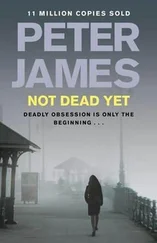He had memorized the time-table before he left the cabin and knew the trains started at ten in the morning after Christmas. He hoped the information was still correct and that the schedule had not been changed over the holiday. The information booths were closed and the only way to check the time tables and buy a ticket was via the monitors and vending machines that were clustered inside the station.
He had to wait for less than fifteen minutes before the train arrived and when it did it was just a couple of minutes late. Only a handful of people exited the compartments, pulling large suitcases or carrying tall backpacks, and even fewer passengers boarded. This time, there was plenty of space for his luggage on the shelf inside the car, and most of the seats were empty. He almost called Michael to say goodbye, but he assumed Michael had been up late the night before, and sent a message instead, saying that he loved him and thought of him all the time, and that he was welcome to visit the cabin any time.

The journey back to the mountains was obscured by fog and rain. The bilberry and heather that were visible along the tracks were almost bare, and the trees and bushes looked as if they’d never grow leaves again. But when he came down the path to the cabin, the last rays from the pale winter sun, as it sank in flames behind the mountains, revealed that green stalks were jutting all over the heath.
HE WAS DETERMINED TO BE AS WELL PREPARED for the upcoming tests as he possibly could. During the time that remained before the meeting he ran for several hours daily, along the fields if the ground was dry, or on the treadmill on the terrace if the soil was too wet. For strength he did exercises that utilized his own body weight, a variety of push-ups, pull-ups, sit-ups, squats, dips, and kicks.
In the morning and midday, when he was most alert, he cycled through the tests he had taken for the first round of the application, and searched for similar tests online. He suspected he had to have as few errors as possible on the tests, and at the same time do them as quickly as possible, to have a chance to pass. He assumed he would be compared with not only a statistical population average, but also against the other applicants. He didn’t know how many or how experienced they would be, but assumed that in addition to an education in the natural sciences, engineering, or medicine, many of them would also have a military or aviation background, perhaps even as fighter pilots or rescue divers. He wondered how many of them had seen action.

Some days into the new year he took the train past his home city to a larger one further south on the coast, departed at its central station, and from there caught a tram to a quiet campus in the suburbs.
The astronaut training center did not distinguish itself from the surrounding low and rectangular structures which, judging from their logos and signs, housed various science and technology companies and research institutions. Only the large scale models of various launch rockets outside indicated that the building was dedicated to activities in space.
A row of flags whipped in the high winds that the new year always seemed to bring. He pulled the hood of his jacket up and pushed his hands deeper into the pockets. Even here, far south of the mountains, the wind was cold and insistent enough to chill the hardshell outer garment and the fleece jacket beneath. It was one of the few times he had felt truly cold that winter. Above the fluttering flags, dense clouds rushed by, looking heavy with rain or snow. The mid-morning was as gloomy as dusk and unlikely to become much brighter until the meager daylight turned to darkness.
At the entrance of the astronaut training center sat a large model of the space organization’s most recent spacecraft, an oblong shape in a matte gray color, with sharp, cutting angles, which made it look as fast and deadly as a shark. He recalled what he had read about the new spacecraft on the organization’s web site; the vessel had been in development for more than a decade and had started as an experimental vehicle to test whether a spacecraft with acute angles and flat planes would deflect the heat and pressure of reentry to the Earth’s atmosphere better than the traditional ones with rounded shapes. From there the spacecraft had been successful at test after test and was now in use as a transportation and cargo system for astronauts in low orbit. Perhaps a modified, larger version of the spacecraft would be constructed for the journey to the red planet?
The glass doors slid open with a breath of hot air from the heaters above to reduce the chill from outside. He passed an inner set of glass doors and entered a surprisingly small foyer where more models of orbital probes and satellites and other spacecraft were displayed on brushed steel pedestals and in canvas-printed photographs on the walls.
A woman in a white blouse, dark blazer, and dark skirt, was holding a clipboard with the space organization’s logo on the back. She welcomed him and asked if he was there for the testing.
He nodded and smiled.
The woman smiled back, her teeth white and even. “Please wait here,” she said. “When everyone has arrived I will call you to follow me.”
Along the back wall of the foyer was a bench with leather cushions for waiting guests to rest their legs, but he felt too energized to sit down. Instead, he wandered around and took in the many models and pictures and plaques that described the space organization’s activities in low Earth orbit, at Mercury, Venus, Mars, Jupiter, Saturn, and the second lagrangian point. The tiles on the floor were made from a black mineral that had tiny, sparkling crystals locked inside, polished to a high shine and a smooth surface. The effect was that of standing in deep space and looking at the multitudes of stars.
When he arrived only a few other candidates dressed in thick winter clothing were waiting in the foyer, but during the next half hour, the room filled with men and women of various ages and builds, so many that he could only study a few of them without staring openly. Some of the arrivals spent the time looking at the exhibits or smiling faintly to everyone else. Others sat down on the bench by the wall, read on their phones or books or newspapers they had brought with them. One or two were eating a packed breakfast. As far as he could see there were about fifty people in the room when the space organization’s representative stepped in the middle of the floor and asked for their attention.
“Welcome everyone!” she smiled. “So happy to see you could make it to the testing today and found your way here. I hope you all had a good journey. Please follow me, and we’ll get started right away.”
The small crowd picked up their belongings and followed the representative through a doorway in the back of the foyer, down a corridor with a mezzanine and skylights in the ceiling. Beneath the skylights hung a series of transparent plastic banners in the sequential colors of the rainbow, each displaying the logo of a former space mission, emitting a full spectrum of colors on the blank white walls. The group was upbeat, but quiet as they passed beneath the rainbow-colored light on the starry floor.
Further in, the hallways of the training center became darker and narrower than those they had followed from the foyer. The space organization’s representative took them down a long corridor, then a shorter one, and finally into a spacious room supplied with rows of desks and computer monitors.
“Please find a seat,” the representative said. “There should be more than enough room for everyone.”
Читать дальше













